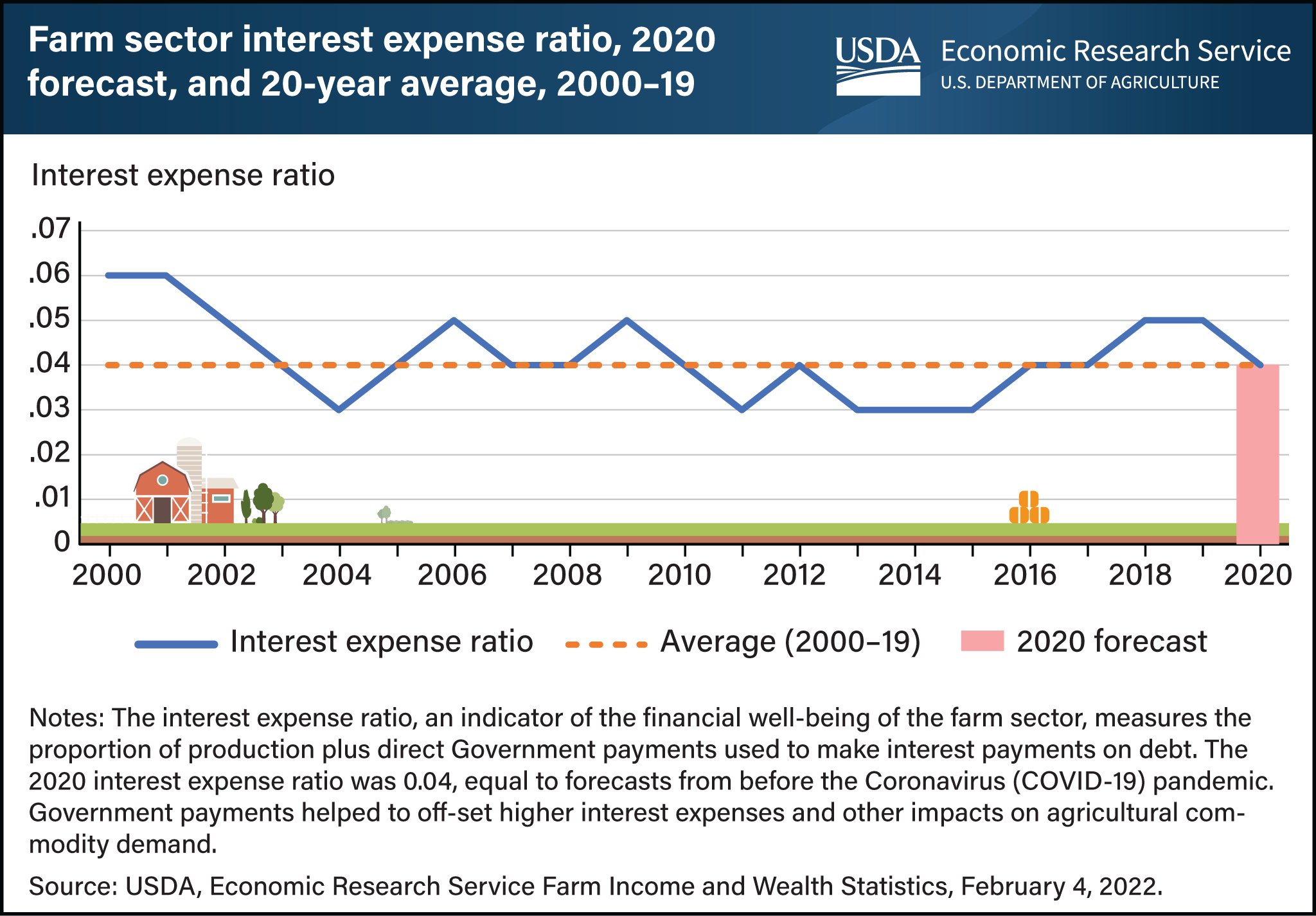Interest expense ratio for farm sector stays even with 20-year average despite pandemic
- by Anil K. Giri, Carrie Litkowski, Dipak Subedi and Tia M. McDonald
- 8/29/2022

The interest expense ratio is one indicator of the financial well-being of the farm sector. For 2020, the ratio was 0.04, remaining in line with the long-term trend and initial forecasts despite the impact of the Coronavirus (COVID-19) pandemic on reduced demand for agricultural commodities. The interest expense ratio is calculated by dividing interest expenses by the sum of the value of production and Government payments for a given year. Interest expenses are the costs incurred by farm operations when debt is used to finance farm activities. A lower interest expense ratio is preferable as it indicates that farmers are spending a smaller share of total revenue on interest expenses. A USDA forecast in February 2020 predicted interest expenses for 2020 at $18.0 billion, with a predicted interest expense ratio of 0.04. By February 2022, interest expenses for 2020 were estimated to be slightly higher than predicted at $19.4 billion. The February 2022 estimates also showed that while the value of production was lower than initially forecast, Government payments were higher. This resulted in an upward revision to the sum of the value of production and Government payments, offsetting the upward revision to interest expenses. That meant the interest expense ratio for 2020 remained consistent with the predicted value as well as the 20-year average of 0.04. The interest expense ratio was highest at 0.06 in 2000 and trended downward to a low of 0.03 multiple times from 2000 to 2020. This chart is drawn from data in the USDA, Economic Research Service COVID-19 Working Paper: Farm Sector Financial Ratios: Pre-COVID Forecasts and Pandemic Performance for 2020, published August 24, 2022.

